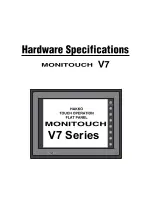
D81-P06-01 GB R5
28/07/2020
www.photowatt.com
15
ANNEX C: MODULE CLEANING GUIDELINES
This manual covers the requirements for the clea-
ning procedure of EDF ENR PWT‘s photovoltaic mo-
dules. The purpose of these cleaning guidelines is
to provide general information for cleaningEDF ENR
PWT modules. System users and professional ins-
tallers should read these guidelines carefully and
strictly follow these instructions.
Failure to follow these instructions may result in
death, injury or damage to the photovoltaic mo-
dules. Damages induced by inappropriate cleaning
procedures will void EDF ENR PWT warranty.
•
Cleaning activities create risk of damaging the
modules and array components, as well as in-
creasing the potential electric shock hazard.
•
Cracked or broken modules represent an electric
shock hazard due to leakage currents, and the
risk of shock is increased when modules are wet.
Before cleaning, thoroughly inspect modules for
cracks, damage, and loose connections.
•
The voltage and current present in an array du-
ring daylight hours are sufficient to cause a le-
thal electrical shock.
•
Ensure that the circuit is disconnected before star-
ting the cleaning procedure as contact with lea-
kage of electrically active parts can result in injury.
•
Ensure that the array has been disconnected to
other active components (such as inverter or com-
biner boxes) before starting with the cleaning.
•
Wear suitable protection (clothes, insulated
gloves, etc.).
•
Do not immerse the module, partially or totally,
in water or any other cleaning solution.
HANDLING NOTICE
•
Use a proper cleaning solution and suitable
cleaning equipment.
•
Do not use abrasive or electric cleaners on the
module.
•
Particular attention should be taken to avoid the
module backsheet or frame to come in contact
with sharp objects, as scratches may directly
affect product safety.
•
Do not use de-greasers on the module.
•
Do not use cleaning corrosive solutions contai-
ning acid, alkali, acetone, or industrial alcohol
•
EDF ENR PWT recommends to avoid rotating
brush cleaning methods, as they could create
micro-cracks in the PV modules.
•
Dirt must never be scraped or rubbed away
when dry, as this will cause micro-scratches on
the glass surface.
SAFETY WARNING
OPERATION PREPARATION
•
Noticeable dirt must be rubbed away by gent-
le cleaning implement (soft cloth, sponge or
brush with soft bristles).
•
Ensure that brushes or agitating tools are not
abrasive to glass, EPDM, silicone, aluminum, or
steel.
•
Conduct the cleaning activities avoiding the
hottest hours of the day, in order to avoid ther-
mal stress on the module.
We recommend the following to be used:
•
Water with low mineral content
•
Near neutral pH water
•
The maximum water pressure recommended is
4 MPa (40 bar)
CLEANING METHODS
Method A: Compressed Air
EDF ENR PWT recommends cleaning the soft dirt
(like dust) on modules just with air pressure. This
technique can be applied as long as the method is
efficient enough considering the existing conditions.
Method B: Wet cleaning
If excessive soiling is present on the module surface,
a non-conductive brush, sponge, or other mild agita-
ting method may be used with caution.
•
Ensure that any brushes or agitating tools are
constructed with non-conductive materials to
minimize risk of electric shock and that they are
not abrasive to the glass or the aluminum frame.
•
If grease is present, an environmental friendly
cleaning agent may be used with caution.
Summary of Contents for PW60HT-C-XF
Page 1: ...INSTALLATION MANUALS For professional use only...
Page 2: ...INSTALLATION MANUAL FOR STANDARD MODULES For professional use only...
Page 27: ...INSTALLATION MANUAL OF DOUBLE GLASS MODULES For professional use only...
Page 42: ...INSTALLATION MANUAL OF BIFACIAL MODULES For professional use only...
















































